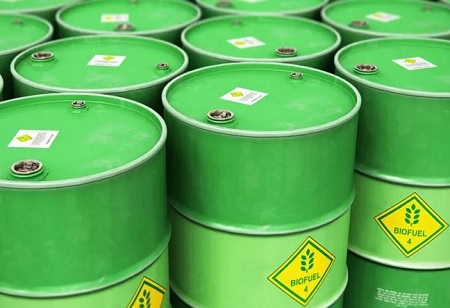In Himachal Pradesh, 8,267 sq. km., or over 22%, of the total forest area is at risk for wildfires. Since pine trees shed their highly combustible needles during the summer due to their high turpentine oil content, most of the fires were reported from pine forests. According to government statistics, the state reports 1,200 to 2,500 forest fires each year. The worst-affected districts in Shimla are Solan, Bilaspur, Una, Hamirpur, Kangra, Mandi, and Sirmaur, which are mid- and low-lying hills.
The government announced that it intends to create compressed biogas (CBG) from pine needles in order to conserve, scientifically manage, and sustainably utilise pine forest leftovers that may be used as biofuel in order to reduce reliance on fossil fuel. With Oil India Ltd. (OIL), with whom it signed a memorandum of understanding last month, it intends to launch a pilot project for the bioconversion of pine needles into biofuel. A sustainable solution to the energy problem and the forest fires will be to use pine needles for the manufacture of biofuel through
pyrolysis and other processes. To capture and develop new and renewable energy sources, including CBG, the government and OIL will work together. The government wants to make use of the waste from the forests. Pine gasification may help rural residents find work while defending woods from fire. Sukhvinder Singh Sukhu, the chief minister, stated that "OIL has assured all-out support to develop renewable energy, promote research and development, and create a sustainable and resilient energy system." The agreement between the two parties is an important step in reaching the objective of Himachal Pradesh becoming the nation's first green energy state by March 2026.
OIL's Bengaluru headquarters would examine the viability of making CBG from pine needles. According to a statement from the government, "if the results are encouraging, this will not only pave the way for producing sustainable energy sources, which will replace traditional fossil fuels, but it will also boost the economy of lower areas of the state."
CBG can be utilised as green, renewable automotive fuel and shares many of the same characteristics as CNG. "CBG may eventually take the place of CNG in the commercial, industrial, and automotive sectors. It is a promising source of energy because of the availability of pine needles, the Chief Minister continued. Pine needles' economic value is increased by being converted into fuel gases or electricity, which encourages people to gather them.
Sukhu stated that clearing our forests of waste pine needles and using them for renewable energy sources is the only way to conserve biodiversity and improve the food supply for cattle. The fall of pine needles begins in April and lasts into early July. A pine forest typically produces two to three tonnes of needles per hectare over the course of a season, and the state has 1,500 square kilometres of pine woods that are found up to an altitude of 5,500 feet.
